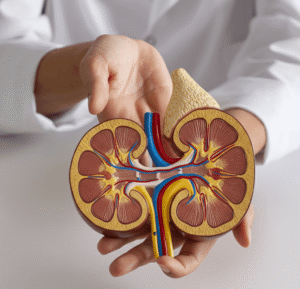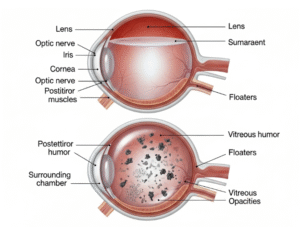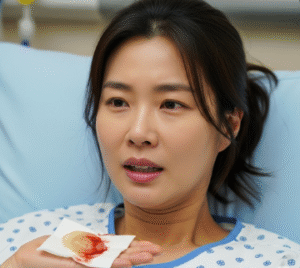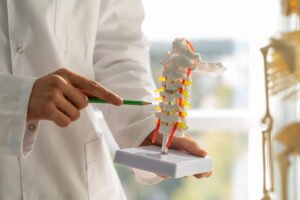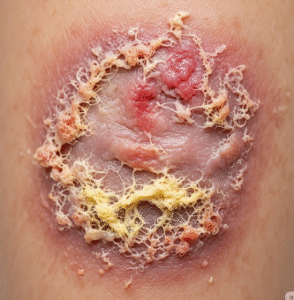What It Is
Thyroid cartilage reduction, also called a tracheal shave or Adam’s apple reduction, is a cosmetic surgical procedure that reduces the prominence of the thyroid cartilage in the neck. By carefully trimming the cartilage, the procedure softens the appearance of the Adam’s apple, resulting in a smoother, more feminine or neutral neck contour.
In Korea, thyroid cartilage reduction is performed by highly skilled plastic and ENT (ear, nose, and throat) surgeons who specialize in delicate neck surgeries. The focus is on achieving a natural outcome while preserving vocal cord safety. This procedure is popular among transgender women, non-binary patients, and cisgender individuals who wish to reduce a prominent Adam’s apple.
Why It’s Done
Cosmetic Goals:
- Creates a smoother, softer neck profile
- Feminizes the neck in gender-affirming surgery
- Enhances confidence in patients self-conscious about a prominent Adam’s apple
Functional Considerations:
- Does not typically affect thyroid function or breathing
- Surgeons take care to protect vocal cord structures to avoid voice changes
Patient Considerations:
- Often chosen by transgender women as part of facial feminization surgery (FFS)
- Also popular among cisgender women or men with a very pronounced Adam’s apple
- Best suited for healthy, non-smoking individuals with realistic expectations
Alternatives
- Non-Surgical Camouflage: High collars, scarves, or fillers around the neck, but only temporary and cosmetic
- Voice Feminization Surgery: Addresses pitch but does not reduce cartilage prominence; often combined with tracheal shave for comprehensive results
- No Treatment: Some patients may choose to avoid surgery if prominence is mild
Preparation
Patients preparing for thyroid cartilage reduction in Korea undergo:
- Consultation: Evaluation by a plastic surgeon or ENT specialist to assess cartilage size and vocal cord proximity
- Imaging: Laryngoscopy or ultrasound may be performed to map vocal cord location
- Health Check: Blood tests and general medical evaluation
- Pre-Operative Instructions: Stop smoking, alcohol, and blood-thinning medications prior to surgery
- Anesthesia Plan: Typically performed under general anesthesia; sometimes under local with sedation for minor corrections
How It’s Done
Type: Surgical, outpatient procedure
Duration: 1–2 hours
Procedure Steps:
- A small incision is made in a natural skin crease of the neck (to hide scars)
- The surgeon carefully exposes the thyroid cartilage
- The protruding cartilage is shaved down to the desired contour, avoiding injury to the vocal cords
- Incision is closed with fine sutures for minimal scarring
Hospitalization: Outpatient; most patients return home the same day
Recovery
- First Few Days: Swelling, mild discomfort, or tightness in the neck
- Voice Rest: Patients may be advised to rest their voice for several days
- Stitches: Removed within 5–7 days if non-dissolvable
- Downtime: Most return to work and social activities within 1 week
- Final Results: Visible after swelling subsides, typically within 1–2 months
Possible Complications
- Swelling and bruising (common and temporary)
- Hoarseness or voice changes (rare with experienced surgeons)
- Visible scarring (minimized by placing incision in natural folds)
- Infection or hematoma (rare with proper care)
- Overcorrection or undercorrection requiring revision
Treatment Options in Korea
Diagnosis
Korean clinics use:
- Endoscopic or Imaging Studies to evaluate cartilage thickness and vocal cord location
- Facial/Neck Proportion Analysis to plan a balanced outcome
- Multidisciplinary Consultation for patients undergoing facial feminization surgery
Medical Treatments
- No effective non-surgical reduction available; only camouflage or adjunctive treatments (e.g., fillers)
Surgical or Advanced Therapies
- Standard Tracheal Shave: Shaving down the thyroid cartilage prominence
- Mini-Incision Techniques: Smaller incisions hidden in natural folds for reduced scarring
- Combined Procedures: Often performed alongside facial feminization surgeries (jaw contouring, rhinoplasty, brow bone reduction)
Rehabilitation and Support
- Regular follow-up visits to monitor healing and scar appearance
- Scar care therapies such as silicone gel or laser treatments offered in Korean clinics
- International patient services: multilingual staff, travel support, and recovery accommodations




